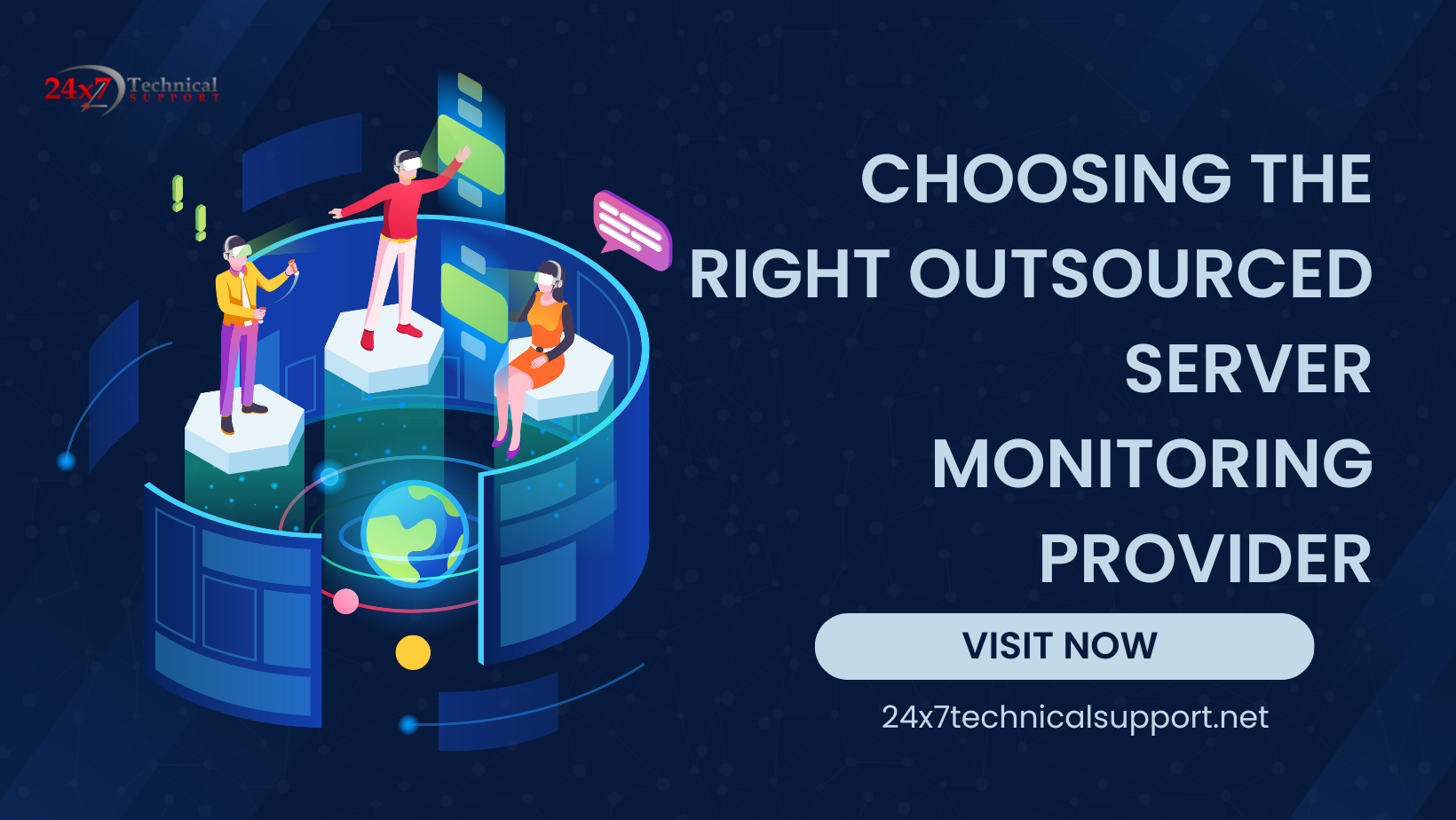
Introduction of Outsourced Server Monitoring :
In today’s digital landscape, where downtime can translate to significant losses, outsourcing server monitoring has become a strategic move for businesses aiming to ensure optimal performance, uptime, and security of their IT infrastructure. However, with a plethora of outsourcing providers available, selecting the right one requires careful consideration. This blog post will walk you through the essential steps and factors to consider when choosing the ideal outsourced server monitoring provider for your business.
Why choose Outsourced Server Monitoring ?

1. Assess Your Needs and Goals:
Before diving into the search, clearly define your monitoring requirements and objectives. Determine what aspects of server monitoring are most crucial for your business – whether it’s performance optimization, security, compliance, or a combination of factors.
2. Expertise and Experience:
Look for providers with a proven track record and substantial experience in server monitoring. Explore their client portfolio and case studies to assess their ability to handle diverse server environments.
3. Monitoring Capabilities:
Ensure the provider offers a comprehensive suite of monitoring services, including real-time performance monitoring, resource utilization tracking, proactive issue detection, and incident response.

4. Technological Stack:
Evaluate the monitoring tools and technologies the provider uses. Advanced tools that encompass AI-driven analytics, machine learning, and predictive modeling can offer a competitive edge in early issue detection and resolution.
5. Customization Options:
Every business has unique requirements. A reliable provider should offer customization options to tailor their monitoring services to your specific needs.
6. Scalability:
Consider your business’s growth trajectory. The provider should be capable of accommodating increased server loads and expanding monitoring requirements as your business scales.
7. Uptime Guarantees and SLAs:
Review the provider’s uptime guarantees and Service Level Agreements (SLAs). These commitments demonstrate their confidence in delivering reliable services.
8. Security and Compliance:
Ensure the provider follows stringent security protocols and adheres to relevant compliance standards. Your sensitive data must be in safe hands.
9. 24/7 Support:
Issues can arise at any time. A provider offering round-the-clock support and a swift response time can make a significant difference in minimizing downtime.
10. Cost Analysis:
While cost isn’t the sole factor, it’s crucial to understand the provider’s pricing structure. Compare costs against the features and benefits offered to determine the overall value.
Conclusion:
Choosing the right outsourced server monitoring provider is a critical decision that can impact the performance, security, and stability of your IT infrastructure. By considering the factors mentioned in this guide, you can make an informed choice that aligns with your business goals and ensures a seamless monitoring experience. Remember, thorough research and due diligence will contribute to a successful partnership with a provider that truly supports your business’s technological needs.